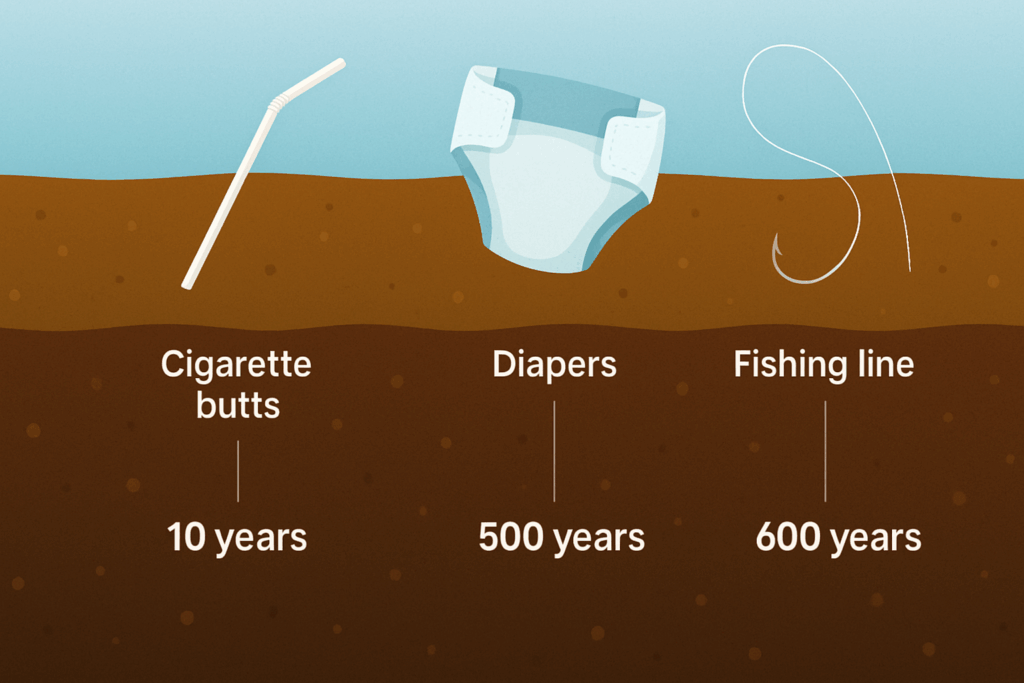At Second Nature Care, we’re always talking about what nurtures the body—but today, let’s talk about what harms the planet. Plastic waste is one of the most insidious forms of pollution, not because we don’t see it, but because it never really goes away.
This powerful graphic shows just how long common plastic items take to decompose:
-
Plastic straws? 200 years.
-
Diapers? 500 years.
-
Fishing line? 600 years.
Even cigarette butts, often littered without a second thought, take up to 10 years to break down—because they’re made from a plastic fiber called cellulose acetate.
Plastic is derived from petroleum, and unlike natural materials, its carbon bonds are resistant to microbial breakdown. That means your disposable coffee lid might still be in the ground when your great-great-grandchildren are alive.
🌱 What Can We Do?
-
Refuse single-use plastics whenever possible.
-
Switch to compostable or reusable options (like bamboo toothbrushes or cloth diapers).
-
Educate and inspire others—because awareness is the first step toward action.
Let’s build a future where care for the Earth is second nature.
Source of Graphic: Visual Capitalist, [Chariot Energy, Feb 2024]
🔗 Infographic: How Long Does Plastic Take to Decompose?
This article provides a detailed visual breakdown of decomposition timelines for various plastic items, offering valuable insights into the longevity of plastic waste in our environment.






